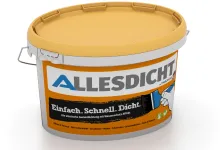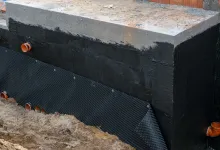Dog kennel floor tile HZ "English Lawn"
- /
-
Delivery in approx.
7-14 days - £63.60 / 4 Piece / m²
- (5.56 kg / Piece)
EAN: 4251469311817 | Item no.: 1181
WARCO’s dog kennel floor tile is a robust yet elastic rubber tile made from PU-bonded granulate. Developed specifically for kennels, runs and similar areas, it provides a resilient, hygienic and animal-friendly surface. Each tile measures 50 × 50 cm, is available in 3 or 4 cm thickness and connects with a concealed puzzle interlock.
Applications & benefits
The dog kennel floor tile is ideal for covering kennels, runs and dog houses. It protects sensitive paws, cushions movements slightly and provides thermal insulation against ground chill and dampness. Its grippy, non-slip surface ensures safe footing – even for heavy or energetic dogs.
Material and surface options
– ELT natural: economical and tough, made from end-of-life tyre granulate in a dark-black look.
– ELT with coloured PU binder: available in brick red, grass green or slate grey.
– EPDM: fully coloured, UV-stable premium surface in a wide choice of colours.
This variety allows kennel floors to be designed functionally and visually to suit individual needs.
Structure & properties
The water-permeable material drains rain and wash water quickly; the surface dries fast. Disinfectants can be used without concern, making daily cleaning easy. The tile remains elastic, durable and temperature-resistant – it will not rot, splinter or crack and is permanently frost-resistant. Mild shock absorption makes the surface joint-friendly and comfortable.
Installation & handling
The tiles feature a concealed puzzle interlock. When installed, the teeth engage form-fit, creating a stable, permanent surface. Installation is done in a checkerboard layout (cross joint), producing an even, uniform and visually appealing area. No edge restraint is required. Tiles can be cut to size with a circular saw or a heavy-duty knife.
Formats & thicknesses
Dog kennel floor tiles are available in 50 × 50 cm format and in thicknesses of 3 or 4 cm.
Discount
Product Highlights
Characteristics
Product Details – Material and Structure
Comparative values
To calculate how many tiles you need for your project, simply use the online installation planner available in the shop. This free browser-based tool is directly accessible on each product page – just below the price and quantity selection. Click on “Plan installation” to open the tool instantly – no registration or download required.
Enter the dimensions of your area, such as the length and width in metres. The planner will then automatically calculate the total number of tiles required, including a realistic allowance for offcuts. You’ll also be shown a suitable layout pattern for the selected product. The tool is user-friendly, accurate and ideal for planning your material requirements with confidence.
Yes, that is the standard approach. The vast majority of our customers – whether private, municipal, or commercial – install the delivered WARCO tiles themselves or with their own staff. The installation is simple and requires no special skills. Only fitting the curb into a concrete foundation with back support demands a little extra craftsmanship. Cutting the elements to size and laying them on a suitable substrate is not challenging. You can find all essential installation information in our Expert Advice – FAQ section on our website.
WARCO offers several connection systems for floor tiles, each differing in design, installation method and visual appearance. Below is an overview of the key differences:
Puzzle joint (visible)
In this system, the tile edges feature an interlocking profile reminiscent of classic jigsaw teeth or mushroom-shaped connectors. During installation, the profiles of adjacent tiles interlock to form a continuous connection across the full tile thickness.
The joint profile may be formed directly during pressing or precisely cut after the tile has cured. Whether the joint is visible in the finished surface depends on the edge finish (e.g. with or without chamfer) and the surface colouration.
The symmetrical shape ensures uniform load transfer and makes this type of joint the most mechanically stable option.
Plug-in connectors (plastic dowels)
This system uses separate connecting elements, typically round plastic dowels, which are inserted into pre-drilled holes along the sides of the tiles. The tiles themselves have smooth, straight edges similar to precast concrete slabs.
Installation is carried out in a half-bond (stretcher bond) pattern: each tile is connected via dowels to two tiles in the row above and two in the row below. This prevents lateral shifting, although some movement along the length of the dowels remains possible. For this reason, an edge restraint must be installed around the perimeter to stabilise the entire area.
Concealed puzzle joint
This method is based on the same mechanical principle as the classic puzzle joint, but is designed to be invisible in the finished surface. The interlocking profile is located on the underside of the tile, integrated into a rebated step joint.
Two tile edges feature a positive locking profile, the other two a matching negative profile. When laid, the tiles interlock securely from below, forming a durable mechanical connection. From above, the surface appears seamless and aligned, typically with a clean, square joint pattern similar to a chessboard layout.








































